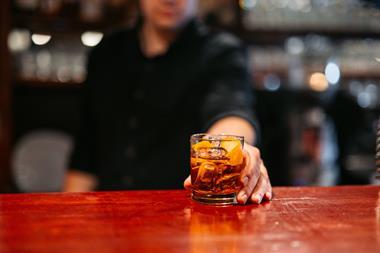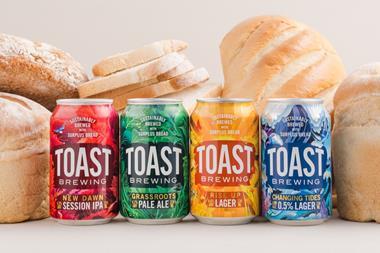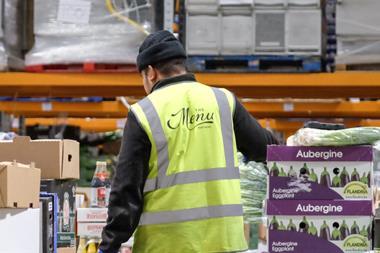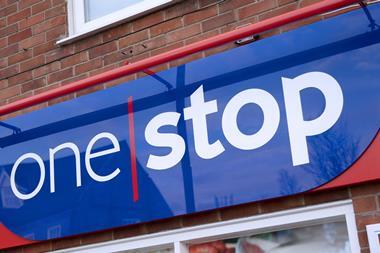As Guinness launches the Surger, Sonya Hook looks at the wackier sides of packaging innovation
Supermarket beer buyers are quick to bemoan the lack of innovation in the beer market. However, the brewers haven’t exactly been idle. And when it comes to technology they are often at the cutting edge of developments. Just last week, Diageo, one of the pioneers of the widget, revealed its latest gadget for the beer lover - the Surger. This uses ultrasonic technology to do visibily what the widget did invisibly: release nitrogen into Guinness to create the iconic black and white pint.
It may sound bonkers. But the Surger is the merely latest in a long line of widgets, gadgets and gizmos that have been launched through the years to get consumers excited about beer. Most of these ideas have been consigned to the dustbin of history. A few have lived on in the mind, if only for their comedy value (think Party Sevens). Only one, the widget, has created a revolution in home drinking.
As our round-up of ideas new and old demonstrates opposite, the brewers don’t give up. It shows the importance of innovation to the category, arguably now more so than ever. Not only do brewers need to combat commoditisation caused by supermarket pricing agendas, they also need to address falling consumption and cater for new habits as more drinkers switch from pubs to their living rooms.
Pete Brown, a beer expert and writer, says: “If you want to build a brand, it has to be through the on-trade before the off-trade, and I believe that this will continue even as beer consumption moves away from pubs. But people will always try to recreate the experience with that beer in the home, and for brewers it is very difficult to work out what will work without the atmosphere of the pub environment.”
The widget and the can itself have been instrumental to the growth of beer sales through the off-trade. Kegs have helped cater for the party occasion - an idea that dates back to the 1970s and dear old Party Sevens. More recently,
brewers have been pouring their energy into developing a variety of mechanisms to keep beer cool. But the holy grail of packaging innovators, the self-chilling can, has so far failed to materialise. Japanese brewer Sapporo did commercialise one idea in the late 1980s, but its device left little room for beer in the can. Not surprisingly, it flopped.
Will the Surger fare any better? Only time will tell. But full marks to Diageo for spotting a trend and coming up with a new idea for the growing numbers who are bringing the bar into their lounges, rather than lounging around in bars. >>when ruddles ruled the intercity buffet car
Beer bottles that really let rip
Those of a certain age will still remember the horrors of the British Rail InterCity buffet car, with its soggy sandwiches and lukewarm tea. There was one bright spot: great beer courtesy of Ruddles County and its iconic bottle with the rip-pull top. True, it was a bit quirky. But it was also really convenient. Now, the idea is making a comeback anong brewers including Mac’s of New Zealand.
>> packs that haven’t packed a punch
Cartons lack any character for beer
Don’t accuse brewers of being afraid to experiment. In their search for alternatives to glass and cans, they have tried everything, it seems. A couple of years ago, for instance, Dog & Duck Best English Ale became the first beer to move into the funky Tetra Prisma carton. Sadly, it flopped. Go back to 1997, and Brakspear came up with the idea of putting its ale in a 20-litre bag-in-box pack sold in Thresher for a whopping £39. That idea also did not go down well with beer drinkers.
>>cans with insulation? whatever next?
To really chill out - wear a wrap
In truth, brewers would love the boffins to perfect the self-chilling can. Until then, they keep coming up with other neat solutions for drinkers. Such as Labatt Blue’s The Cold One, launched in Canada last summer, which has a polymer insulation wrapper to keep the beer cooler for longer. The insulated wrap is being trialled by InBev for Skol in Brazil. We like it. When can we have it too?
>>the widget. Say no more
A head start in replicating draught beer
Aah, the widget. The most successful beer gizmo of all time. It was pioneered by Guinness in 1988. Other ale and stout brands quickly followed suit. The rest is history. Except for 1995, when Whitbread came up with the idea of widget-in-a-bottle technology for brands such as Boddingtons, and Guinness did something similar. Neat idea. Sadly, drinkers thought it sucked.
>>Thermochromic - short for Ink that thinks
Can you tell how cool this really is?
OK, if we can’t have a self-cooling can, and us Brits are not getting insulated cans (see below left), we’ll settle for cans that tell us when the beer is cold enough to drink. Many brewers have experimented with temperature-sensitive paper labels on bottles that indicate optimum drinking temperature. But Coors has gone one better and is using this thermochromic technology on cans.
>>the surger. Hmmm...
A surge of activity on a sound base
As we revealed last week, Diageo’s Surger invention is a bold move away from the widget style of technology. Like the widget, though, it is designed to bring the pub-poured Guinness pint into the home, complete with its creamy head. Diageo hopes the Surger Unit system, being sold as part of a starter kit costing £16.99, will inject some magic into the off-trade. If successful, the novelty gadget could lead to further ultrasonic developments by brewing companies. Perhaps.
>>going beyond party sevens
Brewers are still rolling out barrels
You may think Party Sevens came and went in the 1970s but, in truth, brewers have never really given up on the idea of the perfect at-home keg. Interbrew brought out Stella Artois and Boddingtons draught barrels way back in 2003, and Scottish Courage developed a self-dispensing 35-pint Foster’s Coolkeg at £49.99. The latter was scrapped due to technical issues. But Charles Wells still offers its Bombardier mini cask containing more than eight pints of its real ale. Nice.
>>the blikbeugel - try saying that when you’ve had a few
The best of both worlds
Ever wanted to turn your can of beer into a bottle? No? In truth, neither have we. The Dutch, on the other hand, must think this a great wheeze because Grolsch has brought out a gadget to help consumers do just that. You attach the clip-on blikbeugel to the top of your can to create a bottle top complete with trademark Grolsch swing cap and neck strap. Not in the UK... yet.
>>the ultimate beer drinkers’ gadget?
I, robot, will pour your beer
Can brewers bring bar staff into the home, too? With this spectacular robot fridge, Asahi thinks it can. The brewer is running a competition in Japan for 5,000 drinkers to win the fridge, which can not only chill six cans but open them, tilt the glass and pour out the beer. How fantastic is that? Sure, it can’t order pizza or change the TV channel, but we still want one.
Supermarket beer buyers are quick to bemoan the lack of innovation in the beer market. However, the brewers haven’t exactly been idle. And when it comes to technology they are often at the cutting edge of developments. Just last week, Diageo, one of the pioneers of the widget, revealed its latest gadget for the beer lover - the Surger. This uses ultrasonic technology to do visibily what the widget did invisibly: release nitrogen into Guinness to create the iconic black and white pint.
It may sound bonkers. But the Surger is the merely latest in a long line of widgets, gadgets and gizmos that have been launched through the years to get consumers excited about beer. Most of these ideas have been consigned to the dustbin of history. A few have lived on in the mind, if only for their comedy value (think Party Sevens). Only one, the widget, has created a revolution in home drinking.
As our round-up of ideas new and old demonstrates opposite, the brewers don’t give up. It shows the importance of innovation to the category, arguably now more so than ever. Not only do brewers need to combat commoditisation caused by supermarket pricing agendas, they also need to address falling consumption and cater for new habits as more drinkers switch from pubs to their living rooms.
Pete Brown, a beer expert and writer, says: “If you want to build a brand, it has to be through the on-trade before the off-trade, and I believe that this will continue even as beer consumption moves away from pubs. But people will always try to recreate the experience with that beer in the home, and for brewers it is very difficult to work out what will work without the atmosphere of the pub environment.”
The widget and the can itself have been instrumental to the growth of beer sales through the off-trade. Kegs have helped cater for the party occasion - an idea that dates back to the 1970s and dear old Party Sevens. More recently,
brewers have been pouring their energy into developing a variety of mechanisms to keep beer cool. But the holy grail of packaging innovators, the self-chilling can, has so far failed to materialise. Japanese brewer Sapporo did commercialise one idea in the late 1980s, but its device left little room for beer in the can. Not surprisingly, it flopped.
Will the Surger fare any better? Only time will tell. But full marks to Diageo for spotting a trend and coming up with a new idea for the growing numbers who are bringing the bar into their lounges, rather than lounging around in bars. >>when ruddles ruled the intercity buffet car
Beer bottles that really let rip
Those of a certain age will still remember the horrors of the British Rail InterCity buffet car, with its soggy sandwiches and lukewarm tea. There was one bright spot: great beer courtesy of Ruddles County and its iconic bottle with the rip-pull top. True, it was a bit quirky. But it was also really convenient. Now, the idea is making a comeback anong brewers including Mac’s of New Zealand.
>> packs that haven’t packed a punch
Cartons lack any character for beer
Don’t accuse brewers of being afraid to experiment. In their search for alternatives to glass and cans, they have tried everything, it seems. A couple of years ago, for instance, Dog & Duck Best English Ale became the first beer to move into the funky Tetra Prisma carton. Sadly, it flopped. Go back to 1997, and Brakspear came up with the idea of putting its ale in a 20-litre bag-in-box pack sold in Thresher for a whopping £39. That idea also did not go down well with beer drinkers.
>>cans with insulation? whatever next?
To really chill out - wear a wrap
In truth, brewers would love the boffins to perfect the self-chilling can. Until then, they keep coming up with other neat solutions for drinkers. Such as Labatt Blue’s The Cold One, launched in Canada last summer, which has a polymer insulation wrapper to keep the beer cooler for longer. The insulated wrap is being trialled by InBev for Skol in Brazil. We like it. When can we have it too?
>>the widget. Say no more
A head start in replicating draught beer
Aah, the widget. The most successful beer gizmo of all time. It was pioneered by Guinness in 1988. Other ale and stout brands quickly followed suit. The rest is history. Except for 1995, when Whitbread came up with the idea of widget-in-a-bottle technology for brands such as Boddingtons, and Guinness did something similar. Neat idea. Sadly, drinkers thought it sucked.
>>Thermochromic - short for Ink that thinks
Can you tell how cool this really is?
OK, if we can’t have a self-cooling can, and us Brits are not getting insulated cans (see below left), we’ll settle for cans that tell us when the beer is cold enough to drink. Many brewers have experimented with temperature-sensitive paper labels on bottles that indicate optimum drinking temperature. But Coors has gone one better and is using this thermochromic technology on cans.
>>the surger. Hmmm...
A surge of activity on a sound base
As we revealed last week, Diageo’s Surger invention is a bold move away from the widget style of technology. Like the widget, though, it is designed to bring the pub-poured Guinness pint into the home, complete with its creamy head. Diageo hopes the Surger Unit system, being sold as part of a starter kit costing £16.99, will inject some magic into the off-trade. If successful, the novelty gadget could lead to further ultrasonic developments by brewing companies. Perhaps.
>>going beyond party sevens
Brewers are still rolling out barrels
You may think Party Sevens came and went in the 1970s but, in truth, brewers have never really given up on the idea of the perfect at-home keg. Interbrew brought out Stella Artois and Boddingtons draught barrels way back in 2003, and Scottish Courage developed a self-dispensing 35-pint Foster’s Coolkeg at £49.99. The latter was scrapped due to technical issues. But Charles Wells still offers its Bombardier mini cask containing more than eight pints of its real ale. Nice.
>>the blikbeugel - try saying that when you’ve had a few
The best of both worlds
Ever wanted to turn your can of beer into a bottle? No? In truth, neither have we. The Dutch, on the other hand, must think this a great wheeze because Grolsch has brought out a gadget to help consumers do just that. You attach the clip-on blikbeugel to the top of your can to create a bottle top complete with trademark Grolsch swing cap and neck strap. Not in the UK... yet.
>>the ultimate beer drinkers’ gadget?
I, robot, will pour your beer
Can brewers bring bar staff into the home, too? With this spectacular robot fridge, Asahi thinks it can. The brewer is running a competition in Japan for 5,000 drinkers to win the fridge, which can not only chill six cans but open them, tilt the glass and pour out the beer. How fantastic is that? Sure, it can’t order pizza or change the TV channel, but we still want one.

















No comments yet